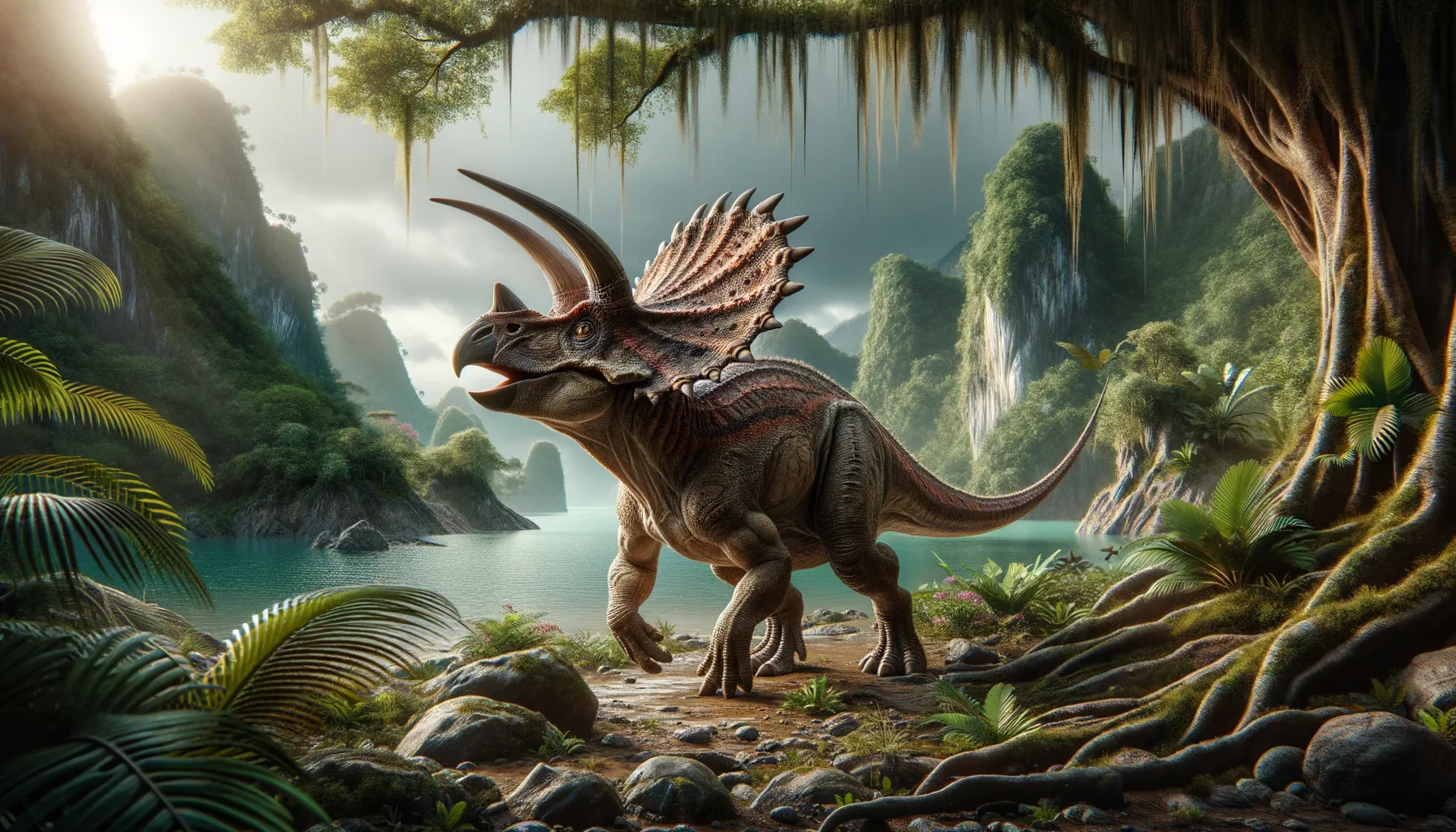
Microceratops
Tiny yet mighty in the dino world!
Period
Cretaceous
Length
Roughly 1 meter long.
Height
About 0.6 meters tall.
Weight
Approximately 10 kilograms.
Microceratops was a small herbivorous dinosaur from the late Cretaceous period, known for its frilled head and small stature. Despite its diminutive size, this dinosaur was well-adapted to its environment, using its beak-like mouth to feed on low-lying plants. Its fossils have given paleontologists insight into the diverse range of dinosaur species that once roamed Asia.
Diet
Microceratops primarily fed on plants. Its diet consisted of low-growing vegetation, which it could easily reach with its small size. It had a beak-like mouth suited for cropping leaves and stems.
Hunting
As a herbivore, Microceratops did not hunt. It relied on stealth and its small size to avoid predators. Its lifestyle was more focused on foraging than hunting.
Environmental challenges
Microceratops faced several environmental challenges, including climatic changes and habitat competition. Predation by larger carnivorous dinosaurs was a constant threat. It was well-suited to environments with dense vegetation, providing shelter and food.
Speed
Relatively slow due to its small size.
Lifespan
Estimated around 10 to 20 years.
First discovery
First discovered in Mongolia in 1953.
Fun Facts
- Microceratops was one of the smallest dinosaurs, measuring only about 2 feet long.
- It lived during the late Cretaceous period, approximately 85 million years ago.
- The name Microceratops means 'small horned face', though it actually had no horns.
- Microceratops was a herbivore, feeding mostly on plants and vegetation.
- Its small size made it easy for Microceratops to hide from predators.
- Microceratops used its beak-like mouth to efficiently grasp and chew its plant-based diet.
- Fossils of Microceratops have been found in what is now Mongolia.
Growth and Development
Microceratops grew quite rapidly to reach maturity, an advantage for evading predators. It hatched from eggs, much like modern reptiles. The juvenile growth stages were crucial for learning survival skills.
Habitat
Microceratops lived in forested regions of what is now Asia, particularly in Mongolia. These environments provided ample foliage for sustenance. The dinosaur's size made it well-suited to navigating dense underbrush.
Interaction with other species
Microceratops likely avoided larger dinosaurs and predators, relying on its size and speed. It might have engaged in mutualistic relationships with other herbivores to reduce individual predation risk. Competition for resources with other herbivores was likely.
Natural lifespan
Microceratops' natural lifespan is estimated to be around 15 years.
Reproduction
Microceratops reproduced by laying eggs in nests. Like many dinosaurs, it may have exhibited some level of parental care, particularly in protecting the eggs. Clutches could vary in size, ensuring at least a few offspring survived to adulthood.
Social behaviour
Microceratops might have lived in small groups for better resource access and predator avoidance. Social interactions could include communication through vocalizations or displays. Group dynamics may have provided young with protection and learning opportunities.
Fossil locations
Fossils of Microceratops have primarily been found in Mongolia. These discoveries contribute to the understanding of Asian dinosaur diversity. The fossils are relatively rare, making each find significant for scientific study.
